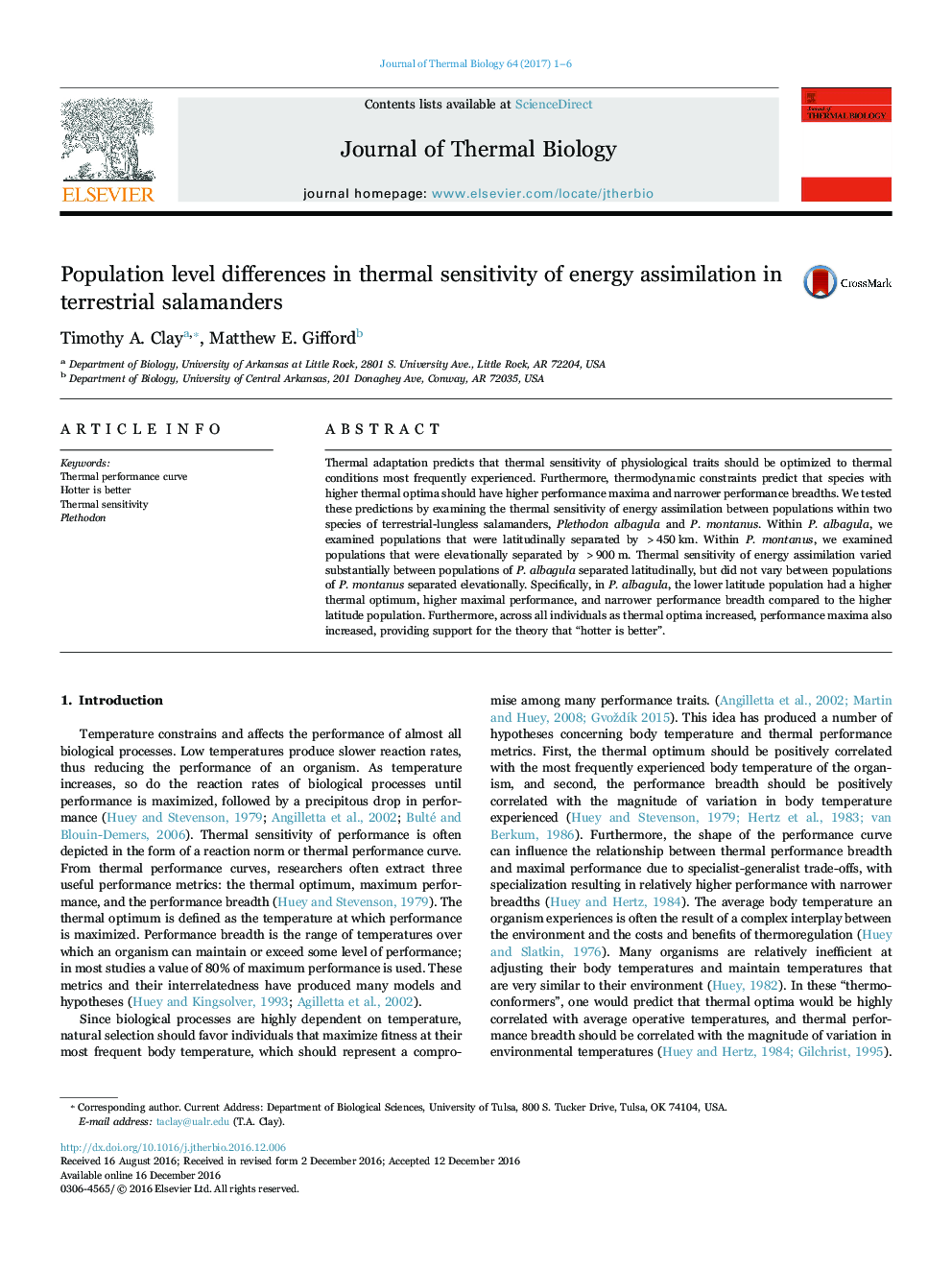| Article ID | Journal | Published Year | Pages | File Type |
|---|---|---|---|---|
| 5593429 | Journal of Thermal Biology | 2017 | 6 Pages |
Abstract
Thermal adaptation predicts that thermal sensitivity of physiological traits should be optimized to thermal conditions most frequently experienced. Furthermore, thermodynamic constraints predict that species with higher thermal optima should have higher performance maxima and narrower performance breadths. We tested these predictions by examining the thermal sensitivity of energy assimilation between populations within two species of terrestrial-lungless salamanders, Plethodon albagula and P. montanus. Within P. albagula, we examined populations that were latitudinally separated by >450Â km. Within P. montanus, we examined populations that were elevationally separated by >900Â m. Thermal sensitivity of energy assimilation varied substantially between populations of P. albagula separated latitudinally, but did not vary between populations of P. montanus separated elevationally. Specifically, in P. albagula, the lower latitude population had a higher thermal optimum, higher maximal performance, and narrower performance breadth compared to the higher latitude population. Furthermore, across all individuals as thermal optima increased, performance maxima also increased, providing support for the theory that “hotter is better”.
Keywords
Related Topics
Life Sciences
Agricultural and Biological Sciences
Agricultural and Biological Sciences (General)
Authors
Timothy A. Clay, Matthew E. Gifford,
